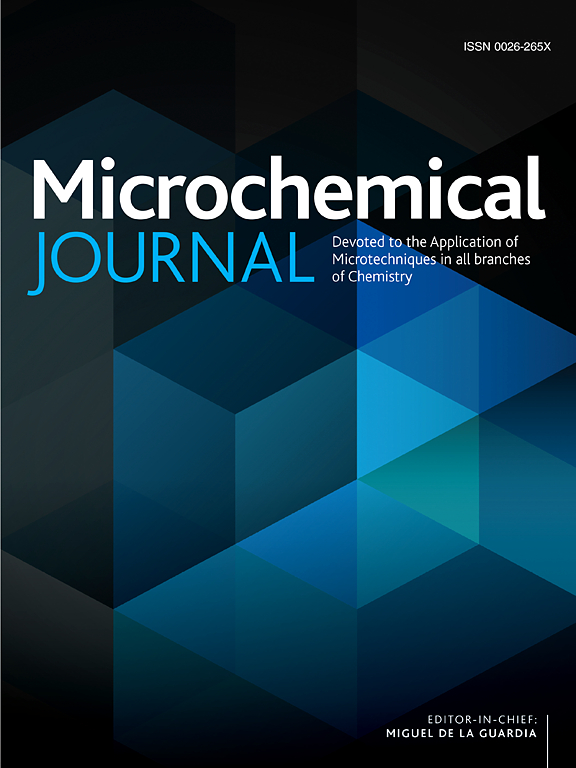A label-free CRISPR/Cas12a-dimeric G-quadruplex/thioflavin T aptasensor for the sensitive detection of deoxynivalenol
IF 4.9
2区 化学
Q1 CHEMISTRY, ANALYTICAL
引用次数: 0
Abstract
Rapid detection of deoxynivalenol (DON) is crucial for food safety. Herein, a highly sensitive method integrating recombinase polymerase amplification (RPA)-CRISPR/Cas12a with dimeric G-quadruplex (G4) was developed for DON detection. In this method, DON was specifically recognized by an aptamer, resulting in the release of a complementary DNA (cDNA) which initially hybridized with the aptamer on the well of a microplate. The released cDNA in the supernatant was sucked out of the microplate, amplified through RPA and activated Cas12a for the trans-cleavage of G4. The disruption of the dimeric G4/thioflavin T (ThT) structures resulted in a significant fluorescence decrease for DON detection. The CRISPR/Cas12a system with excellent specificities, the RPA with efficient amplification capabilities and the dimeric G4/ThT with admirable fluorescent properties induced synergistic effects and remarkably enhanced the detection performance with a low detection limit of 0.0539 ng/mL. The whole detection time of the assay was approximately 1.5 h. Moreover, the minimal content of DON that could be detected in rice flour and corn flour was 2.5 μg/kg. This method offers a promising alternative for DON detection and broadens the application of the CRISPR technique for non-nucleic acid target detection, satisfying the urgent demand in the field of grain analysis.

求助全文
约1分钟内获得全文
求助全文
来源期刊

Microchemical Journal
化学-分析化学
CiteScore
8.70
自引率
8.30%
发文量
1131
审稿时长
1.9 months
期刊介绍:
The Microchemical Journal is a peer reviewed journal devoted to all aspects and phases of analytical chemistry and chemical analysis. The Microchemical Journal publishes articles which are at the forefront of modern analytical chemistry and cover innovations in the techniques to the finest possible limits. This includes fundamental aspects, instrumentation, new developments, innovative and novel methods and applications including environmental and clinical field.
Traditional classical analytical methods such as spectrophotometry and titrimetry as well as established instrumentation methods such as flame and graphite furnace atomic absorption spectrometry, gas chromatography, and modified glassy or carbon electrode electrochemical methods will be considered, provided they show significant improvements and novelty compared to the established methods.
 求助内容:
求助内容: 应助结果提醒方式:
应助结果提醒方式:


